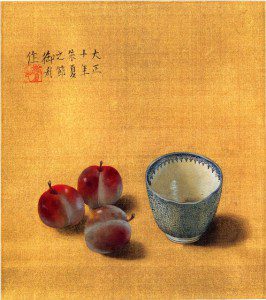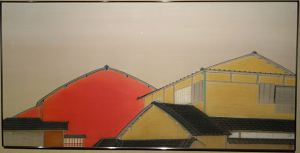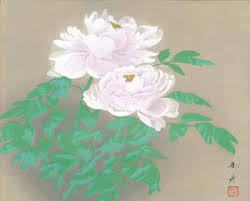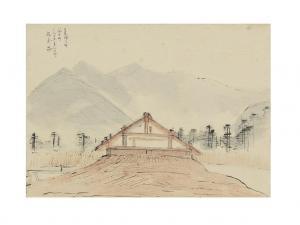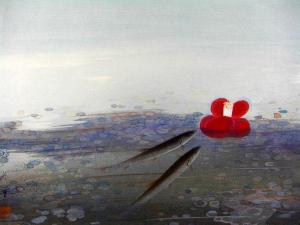Art of Japan and Gyoshu Hayami: A Rich Artistic Soul
Lee Jay Walker
Modern Tokyo Times
Gyoshu Hayami (1894-1935) sadly passed away at a relatively young age but despite this the power of history and momentous changes influenced his artistic soul. Indeed, Gyoshu Hayami highlights much about the history of Japanese art based on the power of the Tokugawa period that influenced him greatly, while adapting to modern art and new concepts. Therefore, despite being born during the Meiji era, it is clear that the influence of the Tokugawa, Taisho and Showa flowed naturally through his artistic veins.
The artistic beauty of Bunjinga, Yamato-e and Rimpa highlight the flows of the past that meant so much to Gyoshu Hayami. These artistic styles and elements of philosophy impacted within the soul of Gyoshu Hayami. However, his inquisitive nature and the modern artistic changing sands in Japan during the Meiji and Taisho eras meant that Gyoshu Hayami was equally open to modern artistic concepts.
In another article about Gyoshu Hayami I comment: “By the time Gyoshu Hayami had reached 17 years of age it was abundantly clear that he was blessed with enormous artistic talent. He was born in Tokyo and during his apprentice period Gyoshu Hayami studied under Matsumoto Fuko. When he reached 17 years of age Imamura Shiko invited Gyoshu Hayami to join the Kojikai circle. This artistic circle was focused on bringing together the cream of the crop of young artists. Also, because of the youthful nature of this circle, then areas of idealism and freshness will have filled the air naturally.”
Despite the momentous artistic changes influencing Japan in relation to European art and how respective Japanese artists responded to the flows of the Meiji and Taisho eras, the old world of China still appealed greatly to Gyoshu Hayami. This reality paints an intriguing reality given the growing nationalism of the Showa period. After all, for Gyoshu Hayami he adored the artistic and cultural richness of the Chinese Song (960-1279) and Yuan (1279-1368) periods.
In truth, Gyoshu Hayami was extremely open to many artistic concepts irrespective if historical or new artistic art movements. This reality means that external artistic art forms like the Northern Renaissance, Symbolism, Song Dynasty and Yuan flowed naturally with internal artistic influences including Bunjinga, Rimpa and Yamato-e. Therefore, despite the relatively short life of Gyoshu Hayami he was clearly extremely inquisitive and dynamic.
Tragically, one can only guess what the future held for Gyoshu Hayami because he passed away suddenly in 1935. Despite this, Gyoshu Hayami leaves behind a rich legacy based on the power of high culture, modernity and individuality.
Modern Tokyo News is part of the Modern Tokyo Times group
DONATIONS to SUPPORT MODERN TOKYO TIMES – please pay PayPal and DONATE to sawakoart@gmail.com
http://moderntokyotimes.com Modern Tokyo Times – International News and Japan News
http://sawandjay.com Modern Tokyo Times – Fashion
https://moderntokyonews.com Modern Tokyo News – Tokyo News and International News
http://global-security-news.com Global Security News – Geopolitics and Terrorism
PLEASE JOIN ON TWITTER
https://twitter.com/MTT_News Modern Tokyo Times
PLEASE JOIN ON FACEBOOK
https://www.facebook.com/moderntokyotimes
Some articles about Japanese art and culture by Modern Tokyo Times are republished based on the need to inform our growing international readership about the unique reality of Japan.
